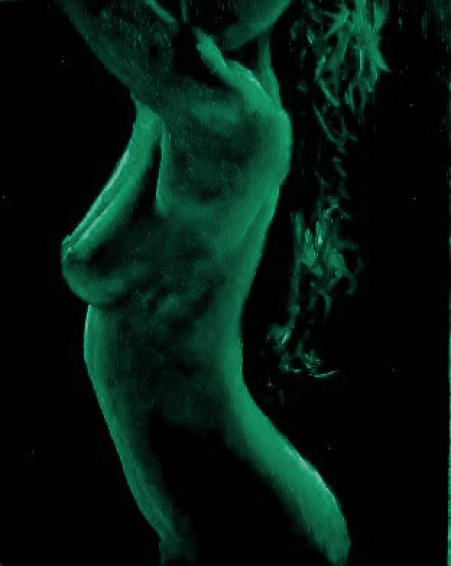
 As the name gives away, besides black and white, only Veridian (a blue-green) was used. This is the one I found to work best among the series.
0 Comments
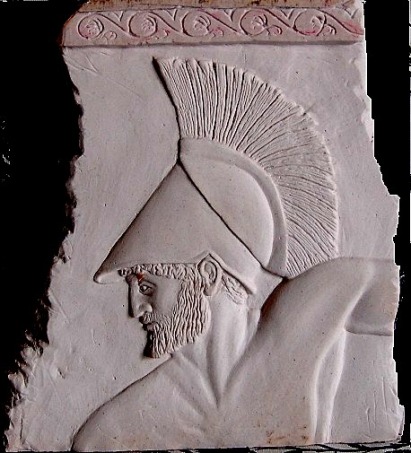 This one took twice as long--two days to carve. This is the plaster model, currently under the first layer of rubber. This is the second piece carved directly from a slab of plaster about 8" x 8" and 1 1/2" thick. I'm starting to like this process better in terms of both enjoyment and results than the clay model method I've been using since 1980. The 300--from Wiki The Battle of Thermopylae (pronounced /θərˈmɒpɨliː/, thər-MOP-i-lee; Greek: Θερμοπύλαι) took place over three days during the second Persian invasion of Greece. It took place simultaneously with the naval battle at Artemisium, in August or September 480 BC, at the pass of Thermopylae ('The Hot Gates'). It was fought between an alliance of Greek city-states, led by Sparta, and the Persian Empire of Xerxes I. The Persian invasion was a delayed response to the defeat of the first Persian invasion of Greece, which had been ended by the Athenian victory at the Battle of Marathon. Xerxes had amassed a huge army and navy, and set out to conquer all of Greece. The Athenian general Themistocles had proposed that the Allied Greeks block the advance of the Persian army at the pass of Thermopylae, and simultaneously block the Persian navy at the Straits of Artemisium. An Allied force of approximately 7,000 men thus marched north to block the pass in the summer of 480 BC. The Persian army, alleged by the ancient sources to have numbered in the millions, arrived at the pass in late August or early September. Vastly outnumbered, the Greeks held up the Persians for seven days in total (including three of battle), before the rear-guard was annihilated in one of history's most famous last stands. During two full days of battle, the small force led by King Leonidas I of Sparta blocked the only road by which the massive Persian army could pass. After the second day of battle, a local resident named Ephialtes betrayed the Greeks by revealing a small path that led behind the Greek lines. Aware that they were being outflanked, Leonidas dismissed the bulk of the Greek army, and remained to guard the rear with 300 Spartans, 700 Thespians, 400 Thebans and perhaps a few hundred others, the vast majority of whom were killed. After this engagement, the Allied navy at Artemisium received news of the defeat at Thermopylae. Since their strategy required both Thermopylae and Artemisium to be held, and given their losses, the Allied navy decided to withdraw to Salamis. The Persians overran Boeotia and then captured the now-evacuated Athens. However, seeking a decisive victory over the Persian fleet, the Allied Greek fleet attacked and defeated the invaders at the Battle of Salamis in late 480 BC. Fearing to be trapped in Europe, Xerxes withdrew with much of his army to Asia, leaving Mardonius to complete the conquest of Greece. The following year, however, saw an Allied army decisively defeat the Persians at the Battle of Plataea, thereby ending the Persian invasion. Both ancient and modern writers have used the Battle of Thermopylae as an example of the power of a patriotic army of freemen defending native soil. The performance of the defenders at the battle of Thermopylae is also used as an example of the advantages of training, equipment, and good use of terrain as force multipliers and has become a symbol of courage against overwhelming odds. 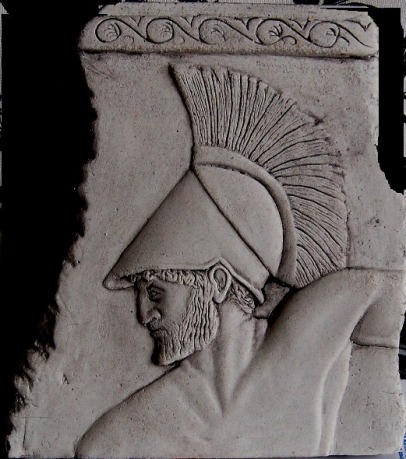 First cast. Concrete, antiqued finish. Details slightly blurred. (For those not interested in concrete engineering, skip the rest). I believe antiquing process wetted and softened surface concrete not yet cured for specific surface abrasion resistance, which I believe among other things has more to do with age and moisture content than to compressive strength. Older= more cured, dryer=better local abrasion resistance so that it loses fewer details when using even mildly invasive processing techniques and certainly those potentially damaging ones such as acid washing, sandblasting, and in my case even the touch of a soft brush 24 hours after casting. I’d guess antiquing, since it necessarily involves the wetting of concrete, should be done only after the casting is seven days old to allow it to have achieved a major portion of its ultimate compressive strength. This is so it can better tolerate the surface abrasion when wetted and then having mineral oxide pigment scrubbed into its surface and wiped off again. 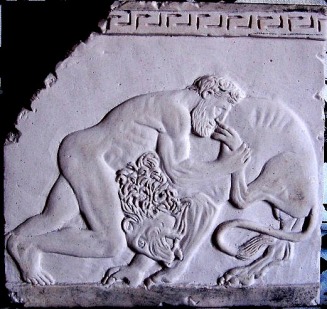 I'd like to call this the Aged Hercules and the Lion. 60's? 70's? Lean but not as much, musculature retained that would cause envy among the gods but now he's put on a few pounds since he took on the challenge (the eighth, long forgotten), of drinking everything in the Carthaginian Winery. Herculean hangover notwithstanding, he next fights the dreaded Droid lion, shows it the error of its ways, tames it and they are afterwords lifelong buddies. Really. Look it up. I'm kidding. This is the first model I've ever been able to complete, starting from scratch, in one day. Concept arrived on a Wednesday morning and model completed the same day, mold done on Thursday, and the first concrete pour on Friday.What is different about this is that there was no initial clay model and temporary mold., but was carved directly from a 1 1/2" thick slab of plaster. I hope I can continue finding interesting and appealing subject matter like this.  Here's the first casting. Concrete, antiqued with mineral oxide pigment. 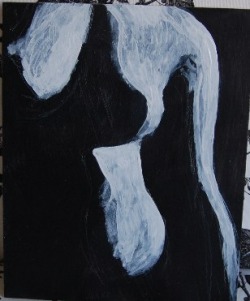 I wanted to do something both sensual and moody. After I developed the idea a little more, I wondered how many basic color harmonies might be available that stayed within the spirit of things and were effective. One thing I discovered is that to use the process I'm about to illustrate, yellow is not one of my choices in that it's not transparent enough. Also I discovered that oranges and reds--in fact any warm color--tends to look to the eye as within the range of normal flesh tones, even though the colors used are much stronger. I found cool colors to be especially effective for these moods. But for this first one, I began to document one based on magenta. The first step is to establish a black background in acrylic and, after drying, apply pure white where the unidirectional light is shining. 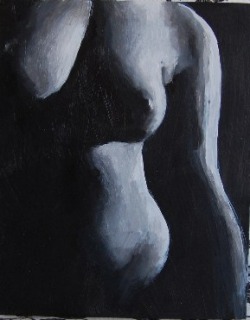 Here some intermediate gray transitions worked out, still in acrylic.  Within a few minutes the acrylic has dried. I applier Magenta over the entire painting, straight from the tube. Many blues, reds and violets are transparent, so that they actually deepen the darks but don't cover the lights and the acrylic underpainting shows through, newly tinted by the oils. Do you have any idea how long it might have taken me to get here by another path and how much muddier my boots might have been? 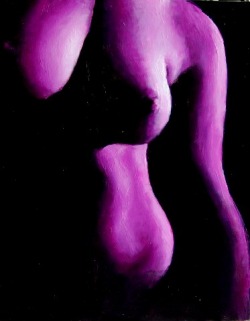 Last are the highlights. The only colors used in this painting were black, magenta, and white. I plan on an initial series of five using magenta (this one), red-violet,blue green, blue, and violet, so I hope you'll stay tuned. Two weeks ago I did a series of seven paintings as an experiment, using different color harmonies but basically just painting clouds and seeing what forms developed out of those clouds and later adding some miscellaneous but mostly invented foreground items. I consider it a failed experiment because, although I don't mind a few of them, they mostly lack the contrast realism of those done from photos. Anyway, it was something I had to try, though I wish I'd done fewer. I'll just lump them all together briefly here. Not one of these is actually finished. Though I will likely finish at least one of them eventually, I place them here unfinished because I will likely do no more work on most of them.
|
Archives
October 2018
Categories
All
|
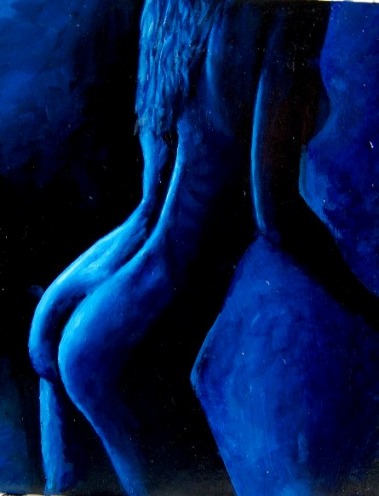
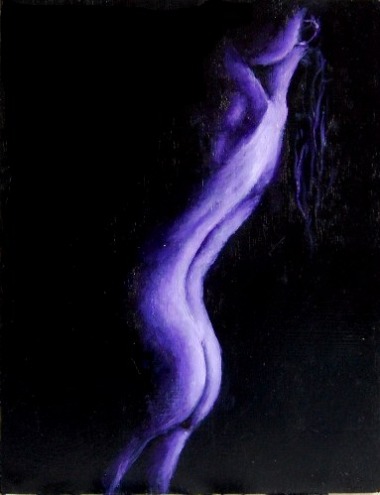
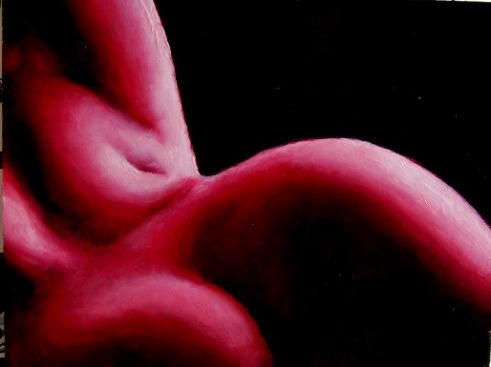



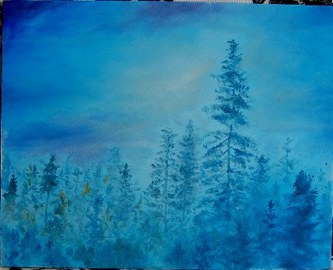
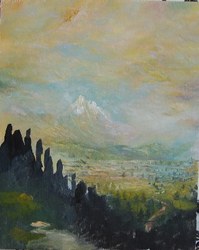

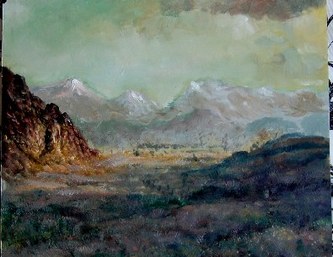
 RSS Feed
RSS Feed
